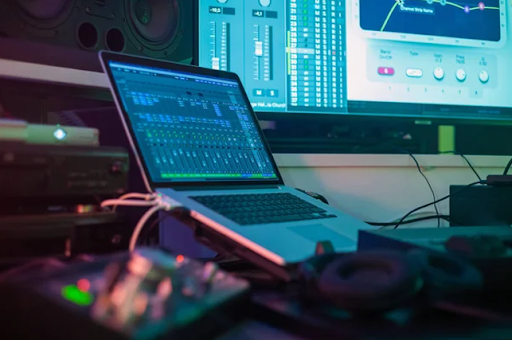Tech Meets Beats. The Role of Apple’s M1 and M2 Chips in the Digital Transformation of Urban Music
Tech Meets Beats. The Role of Apple’s M1 and M2 Chips in the Digital Transformation of Urban Music
The digital revolution has affected the music industry as well. Especially in the urban area, where speed and innovation are key success factors. Technological breakthroughs provide artists with new tools for creating and promoting music. One of these breakthroughs was the introduction of Apple’s M1 and M2 chips. They played a crucial role in accelerating audio processing and visualization. The revolutionary nature of Apple Silicon opened up new opportunities for music creation. Musicians and others can now use devices with Apple Silicon to perform complex tasks. Below, we will look at how Apple M1 and M2 chips have influenced the development of urban music, what they offer, and why these technologies have become indispensable in the modern digital environment.
The Role of Apple Silicon Chips in Urban Music
With their appearance, the music industry has undergone profound changes. M1 and M2 chips have become the basis for many innovations. Apple M chips provide high performance and optimized energy efficiency. This allows processing large volumes of audio data without delays, which is highly desirable for modern musicians who are interested in maximizing performance during studio work and live performances.
One of the biggest advantages of chips is their ability to work with large libraries of sounds and samples. The Apple M2 chip provides more power than previous generations. So musicians can use several dozen plug-ins simultaneously and experiment with new sounds, textures, and rhythms without worrying about computing power limitations.
Apple M1 Chip vs M2
The M1 was Apple’s first attempt to move its computers to its own ARM processors. With the advent of M2, the question of whether M2 is better than M1 has gained popularity. The answer lies in the specifics of use. Therefore, when comparing M1 vs M2 chip, we can clearly outline how M2 differs, namely, it has
~ higher memory bandwidth,
~ increased number of transistors,
~ improved graphics performance,
~ also offers up to 18% faster CPU and up to 35% better graphics performance compared to the M1.
This allows musicians to use more sophisticated visual effects during their live performances and when creating music videos.
So, if you’re asking yourself is M2 better than M1?, the answer is yes for those who are actively involved in processing not only audio but also visual components of music. However, for most common music production tasks, the difference between M1 and M2 chips is not so significant as to make the upgrade mandatory.
The Impact of Apple Silicon on Digital Production and Mobility. New Opportunities for Urban Music
Apple Silicon chips have changed music production due to their architecture.
Mobility has become a key element in the lives of modern artists. Especially in the urban environment. The M1 chip has opened the door to more energy-efficient, yet powerful devices. This allows musicians to create complex musical compositions even on the go, from the home studio to the train or airplane.
These Chips are characterized by even greater performance compared to basic models, making them attractive to sound design professionals. Thanks to such devices, there is a seamless transition from one stage of production to another, without the need to switch between different systems.
An important aspect is the difference between M1 and M2 chips.
M2 provides significant performance improvements. Especially when it comes to working with graphics and computing resources. However, for musicians who work exclusively with audio, this is not a major factor. But for those who combine sound with visuals, the M2 opens up new possibilities for experimentation and innovative shows.
The Power of Real-Time Computing
Thanks to the M1 and M2 architecture, artists can use multiple audio plug-ins simultaneously without sacrificing system performance. This opens the door to new musical experiments. In particular, the use of numerous effects in real time without delay or interruption.
Such capabilities are especially important for live performances, because every second is critical, and any delay can negatively affect the overall perception of music. The new M2 graphic architecture also allows for more multimedia elements that are synchronized with the music. This allows for more interactive and engaging shows.
Summary
Urban music, which has always been a field for experimentation, has received a powerful boost with the Apple M1 and M2. The digital transformation of urban music is closely linked to the development of new technologies, and Apple Silicon is at the forefront of them. These chips have become a powerful tool that allows musicians, producers, and engineers to have new ways to create and perform music. These chips have changed the way music is created. From improved performance to mobility and the ability to work with large amounts of data in real time. Musicians now have at their disposal technologies that allow them to push the boundaries of creativity and produce a high level of quality work in both audio and audiovisual projects. And this may continue to indicate that in the future, Apple M chips will become an integral part of the industry and set new standards in music creation and performance.
Photo Credit: – depositphotos.com

